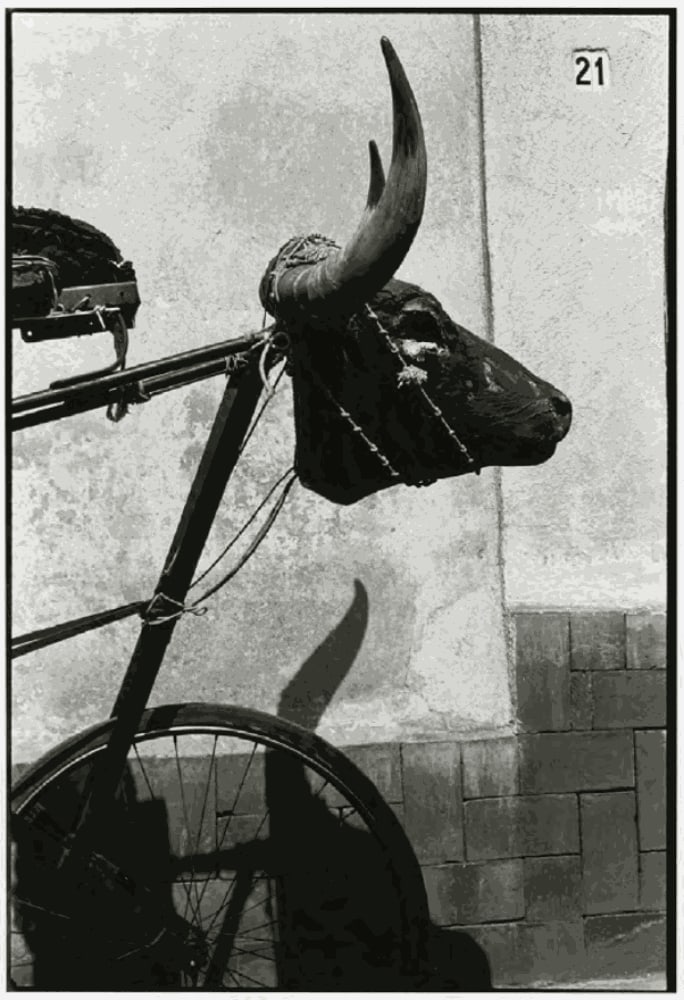
ROSEGALLERY is thrilled to announce Graciela Iturbide's upcoming exhibition Heliotropo 37 at Foundation Cartier pour l'art contemporain, opening 12 February 2022.
This exhibition showcases the largest presentation of Iturbide's work in Europe, with work from the 1970's to present day. In honor of this momentous exhibition, Iturbide opens the doors of her studio at 37 Calle Heliotropo in Mexico, an architectural masterpiece by Mauricio Rocha, who has also been entrusted with the exhibition scenography. A veritable exhibition-portrait, Heliotropo 37 unites over 200 images, from the artist's most iconic photographs to her more works, as well as a color series created specifically for the exhibition.
The following text from Foundation Cartier's website highlights Iturbide's practice and methodology over the years. For the full original text kindly click here.
Graciela Iturbide was introduced to photography in the 1970s alongside Manuel Àlvarez Bravo (1902-2002). She followed the former on his travels to villages and popular Mexican festivals, where she watched him looking for the right place, waiting for something to happen, practically invisible, disturbing no one, and then photographing anything that interested him. He became the young Graciela Iturbide's mentor and shared with her his sensitivity and humanist approach to the world. The exhibition presents a large number of photographs of people she met and objects that caught her attention over the course of her various journeys throughout Mexico, but also to Germany, Spain, Ecuador, Japan, the United States, India, Madagascar, Argentina, Peru, and Panama, between the 1970s and 1990s. Amongst the emblematic series from this period are Los que viven en la arena [Those who live in the sand, 1978] for which Graciela Iturbide spent a long time living with the Seri community in the Sonora Desert in the north-west of the country; Juchitán de las mujeres (1979-1989), devoted to Zapotec women and culture, in the Oaxaca Valley of south-eastern Mexico, and the White Fence Gang series (1986-1989) focusing on cholos, gangs of Mexican origin in Los Angeles and Tijuana. Rather than the magic realism with which she has often been associated, Graciela Iturbide prefers the idea of a "touch of poetry and imagination" that pushes the documentary interpretation further and finds the opportunity to learn and be amazed through her various voyages all around the world: "Knowledge is twofold: when you travel, you discover things both outside and inside yourself, through your solitude."

In addition to the photographs that made the artist famous, the Heliotropo 37 exhibition reveals her recent photographic production, little presented up until now. Over the years, Graciela Iturbide's images have become devoid of any human presence and her attention has turned to materials and textures, revealing the metaphysical link that unites the artist to objects, nature and animals. Naturata, executed between 1996 and 2004 in the botanical garden of Oaxaca, heralded the beginning of this gradual disappearance: plants and cacti, held in place by ropes, wrapped in burlap sacks, are abstracted under sails and nets.
In the late 1990s, Graciela Iturbide travelled across Louisiana and studied the desolate landscapes of the southern United States. In 2000 and 2010, she continued her quest for objects and symbols in India and Italy, photographing advertising signs, piles of shoes and knives in storefront windows, relay masts swaying in the wind, and abandoned houses overgrown with vegetation.
A unique series of color photographs
In 2021, at the initiative of the Fondation Cartier, Graciela Iturbide travelled to Tecali, a village close to Puebla in Mexico where alabaster and onyx are mined and cut. A rare occurrence in her career, she abandoned black and white in favor of color photography to capture the pink and white stones being polished. The alabaster blocks on which writings and engravings are occasionally visible, stand out against the crystalline sky, like totems.
CURRENT EXHIBITIONS:
Four self-portraits by Iturbide are currently on view in San Francisco Museum of Modern Art's exhibition 'Constellations: Photographs in Dialogue'.
The National Museum of Women in the Arts in collaboration with the Museum of Fine Arts, Boston created the most extensive U.S. exhibition of the artist's work in more than two decades, Graciela Iturbide's Mexico. While the museum is closed for in-person visitors, an online version of the exhibition can be viewed here.

Graciela Iturbide, Autorretrato como Seri, Desierto de Sonora (Self-Portrait as Seri, Sonoran Desert), 1979.

